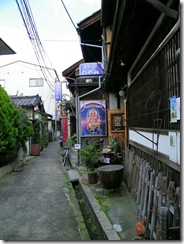This past Sunday Japan held nationwide elections with the upstart Democratic Party of Japan winning as expected. This is somewhat of an anomaly in that the rival Liberal Democratic Party (LDP) has held power continuously since WWII excepting for a brief period in the 1990s.
Much as Europeans have difficulty understanding America’s two party system, the LDP’s dominance in Japanese politics is hard to fathom for foreigners. The party contains a spectrum political opinions excluding only the extremes of the left and right and from the early days of post war occupation has maintained its goals of stability and prosperity. As the rebuilding of the country from the devastation of war coincided with the desires of the populace, the party consistently won at the polls.
Its success is also due to the LDPs operation as a political machine, much like the old Tammany Hall in New York, though on a nationwide scale. Rather than simply seeking the support of urban dwellers, the LDP has focused on the rural constituency, providing generous support for farmers and villages across the country.
One aspect of this spending, obvious when traversing the countryside, is the ocean of concrete visible as roads, bridges and other public works projects ensuring the financial support of construction companies for the LDP.
Like Tammany Hall, the LDP has been good at providing services to it supporters but bad at evolving to meet new environments due to its opaque decision making and investment in the status quo.
Since the bursting of the financial bubble in the early 90’s Japan has gone through an unremitting period of economic stagnation which the LDP has been unable to address, much to the increasingly anxiety of the citizenry. Meanwhile the ongoing depopulation of rural Japan has reduced the effectiveness of its strategy of patronizing the countryside with public spending in exchange for votes.
Diplomatically the end of the Cold War and the rise of China have created new realities that cast doubt on the usefulness of the American alliance. Analysis of the elections in the US media seems to focus on this issue and social causes of interest in America such as the role of women in politics.
My perspective is somewhat different as I believe that intrinsic social dynamics are behind this rebellion against the LDP’s rule. The goals of stability and prosperity that generations of LDP politicians have espoused have now devolved into stagnation and a sense futility in the country.
Young people are increasingly residing in a marginalized world of part time labor and undefined national purpose. According to a recent study, Japanese teenagers have significantly lower expectations for the future than those in Western countries. As discussed in a previous post the artist Takashi Murakami believes that Japanese Post Modernism is a reflection of this malaise.
The challenge of the new government will be to address these issues while dismantling the beauraucratic and mechanistic approach the government has taken under the LDP. This is complicated by the pervasiveness of the party, as can be seen by the fact that reformist Junichi Koizumi, the first non-LDP Prime Minister and Yukio Hatoyama, the current incoming Prime Minister are both former long time members of the LDP. Hatoyama’s grandfather was actually one of the founding members of the LDP and he like Koizumi, are second generation politicians looking to reform the system while a part of it.



